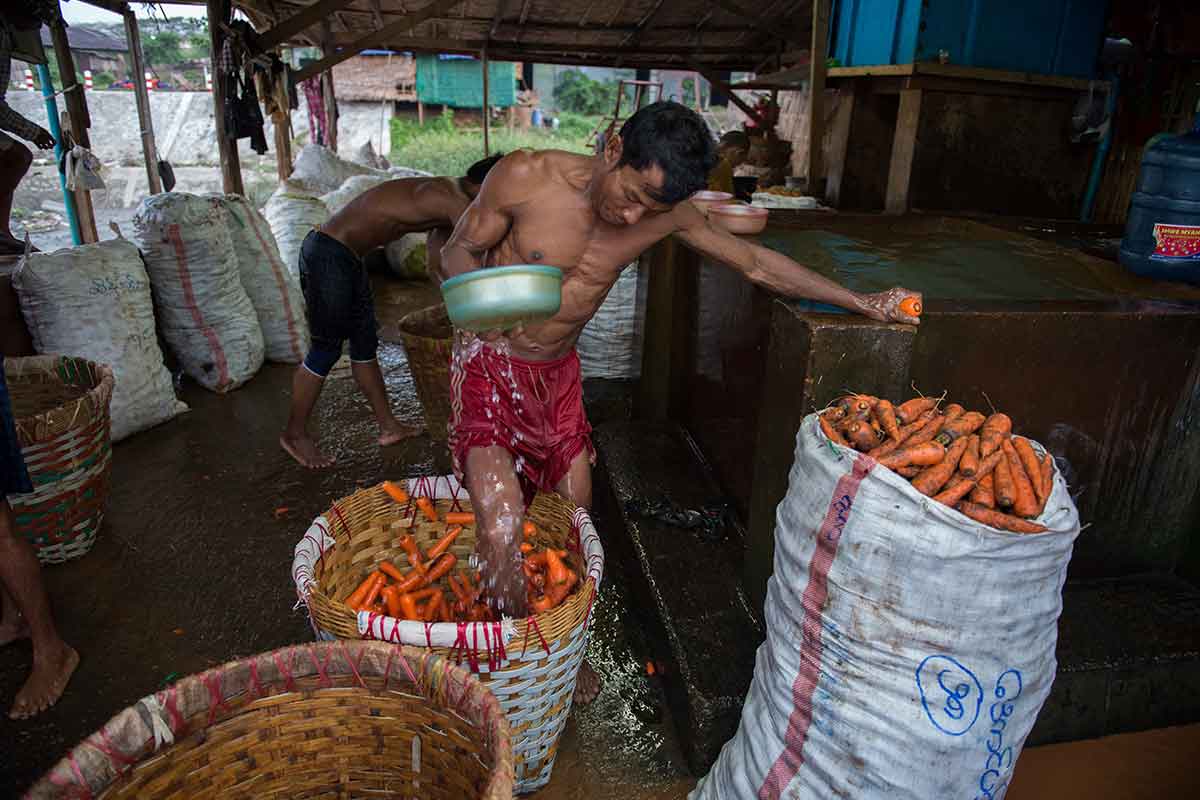Around the world, nearly US$1 trillion worth of food is wasted annually. This amounts to a third of the food produced annually by weight and a quarter by calories. Food loss and waste occur throughout the supply chain. Globally, food loss and waste contribute roughly one-quarter of all agricultural greenhouse gas (GHG) emissions, which amount to roughly eight percent of global emissions.
In lower income countries, over 40 percent of food losses take place upstream in the food value chain due to inefficiencies in agricultural production during harvesting, post-harvest and processing. In contrast, in middle- and high-income countries, more than 40 percent of food waste takes place downstream at the retail and consumer levels, mainly caused by strict aesthetic standards and portions that are too big.
Efforts to reduce food loss and waste are among the key measures highlighted for climate action. According to the World Resources Institute (WRI), a reduction in food loss and waste by 25 percent globally could reduce the food demand gap between 2010 and 2050 by 12 percent, reduce the land demand gap to produce the food needed in 2050 compared to 2010 by 27 percent, and reduce the agricultural GHG emission to reach the agreed reduction target for 2050 by 15 percent.
Most effective and democratic climate action
Based on quantification of total atmospheric carbon dioxide (CO2) equivalent reduction, among all of the solutions laid out, cutting down on food loss and waste is the third most effective climate action. What is more promising with this measure is the fact that reducing food loss and waste is also the most democratic of solutions as almost everyone has a hand in causing food loss and waste throughout the supply chain.
According to Project Drawdown, an initiative to bridge the divide between urgency and agency in climate action, producing food that ends up uneaten squanders a host of resources like seeds, water, energy, land, fertiliser, hours of labour and financial capital. Its Vice President and Research Director, Chad Frischmann said that if food loss and waste were a country, it would come in third after the United States (US) and China in terms of impact on global warming.
“Carbon dioxide, methane, nitrous oxide and hydrofluorocarbons (fluorinated gases used in refrigeration) are produced and emitted from food production to our refrigerators and all the metal cans, plastic bags and cardboard boxes our food comes in. By throwing away half a lasagne, half of the emissions that resulted from producing and processing, packaging, shipping, storing, picking up and cooking it are also wasted.
“It represents one of the greatest possibilities for individuals, companies and communities to contribute to reversing global warming and at the same time feed more people, increase economic benefits and preserve threatened ecosystems,” said Frischmann.
Save the nutrients, save the world
According to a policy brief by the Global Panel for Agriculture and Food Systems for Nutrition (GLOPAN), while approximately 1.3 billion metric tons of food produced for human consumption never reaches consumers’ plates, three billion people have poor or inadequate diets. Compounding the issue is the fact that many nutrient-rich foods such as fruits, vegetables, dairy products, meats, fish and seafood are disproportionately susceptible to both, loss and waste.

Source: World Resources Institute and Global Panel for Agriculture and Food Systems for Nutrition.
The brief highlighted that in the absence of fortification and supplements, the average global amount of vitamin A produced in human-edible crops was found to be nearly 22 percent greater than required globally. However, after loss and waste, the amount available for consumption was 11 percent less than required. Similarly, available iron is reduced from nearly seven times the amount needed to just over twice the human requirement.
“Some of the most important deficiencies are associated with calcium, iron, vitamin A and zinc. Deficiencies in a single micronutrient can carry serious health, as well as economic costs. For example, the cumulative economic cost of cognitive impairment and lower labour productivity due to iron-deficiency anaemia is on average four percent of gross domestic product (GDP) for low-income countries,” stated the report.
Wasting food represents a major food system dysfunction that should no longer be tolerated. Nutrient loss through food loss and waste also represent missed opportunities to reduce malnutrition and is an opportunity loss for development. While the more targeted measures for climate actions often rely on coordination at a higher level, reducing food loss and waste, especially downstream in the chain, depends on each and every one of us.
Related articles:
A five-course menu for a sustainable future
Food security is key to SDGs success
